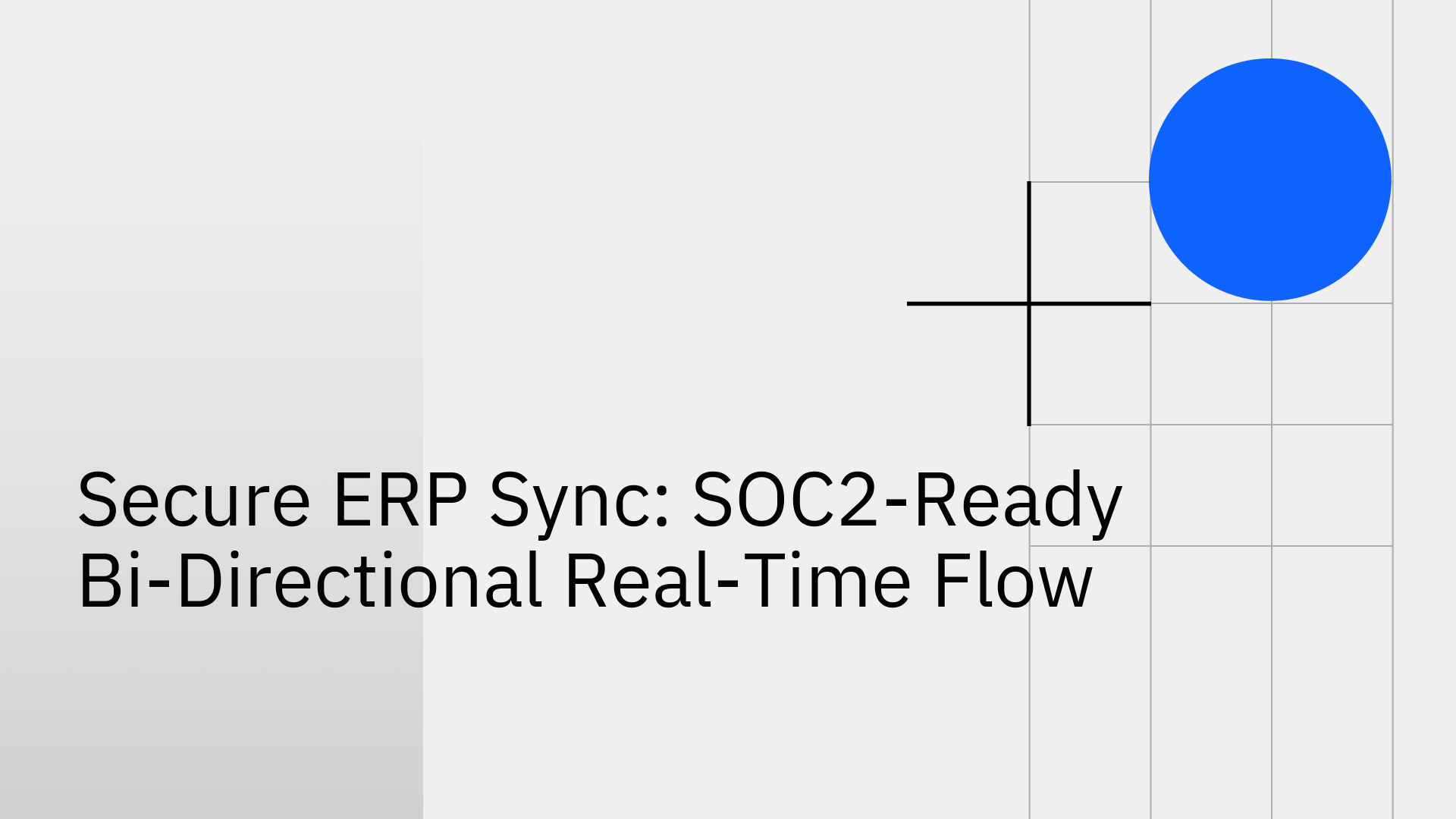
Enterprise Resource Planning (ERP) systems are the operational backbone for many businesses, managing everything from finance and manufacturing to supply chain and human resources. They are the central hub for a company's most critical data.
The core problem arises when these powerful ERP systems don't communicate effectively with other essential applications like CRMs, databases, and e-commerce platforms, creating isolated data silos.
To maintain data integrity and peak operational efficiency, seamless erp system data synchronization is not just a nice-to-have it's a necessity. This article will explore how to achieve a secure, SOC 2-ready, bi-directional, and real-time data flow between your ERP and all other systems in your tech stack.
Poor ERP integration creates a host of common problems, including constant manual data entry, frequent errors, and frustrating operational delays [4]. Many businesses still rely on outdated integration methods, like nightly batch jobs, which transfer data in scheduled bulk updates. This approach leads to stale data, meaning your sales team in the morning might be looking at different customer information than your finance team in the afternoon.
These data silos prevent a unified view of the business, hindering effective decision-making and hurting the customer experience. Without a clear strategy, connecting your ERP to other applications becomes a complex and fragile process [3]. The solution lies in a modern approach: bi-directional sync, which ensures data flows seamlessly in both directions between your systems.
Bi-directional synchronization ensures that when data is updated in one system—for example, a customer's address in your CRM—it is instantly and automatically updated in your ERP, and vice-versa. This process creates a consistent and reliable "single source of truth" across all your business applications, eliminating confusion and ensuring every team works with the most accurate information [2].
Automating the data flow between your ERP and other systems completely eliminates the need for manual data entry. This not only saves countless hours but also significantly reduces the risk of human error, which can be costly [5]. For instance, with the right real-time bi-directional sync tools, a sales order created in Salesforce can automatically trigger an invoice in NetSuite and update inventory levels, all in a matter of seconds.
SOC 2 is a compliance standard developed by the American Institute of CPAs (AICPA) that specifies how organizations should manage customer data. It is based on five "trust service principles": security, availability, processing integrity, confidentiality, and privacy.
ERP data is among the most sensitive information a company holds, containing financial records, confidential customer details, and proprietary business data. For this reason, security is non-negotiable. Using non-compliant integration tools exposes your business to significant risks, including data breaches, reputational damage, and steep fines for failing to meet regulatory requirements like GDPR or HIPAA. Security isn't just a feature; it's a foundational requirement for any modern data integration platform.
Stacksync is a modern platform built from the ground up to address the challenges of ERP data synchronization securely and at scale. As a SOC 2 Type II compliant platform, Stacksync provides the enterprise-grade security and reliability that technical teams can trust for their most mission-critical data flows.
Imagine a scenario where a "closed-won" deal in Salesforce or HubSpot automatically creates a new customer and sales order in an ERP like NetSuite or SAP. This alignment is crucial for streamlining the order-to-cash process. Furthermore, when a payment is processed in the ERP, that information can be synced back to the CRM, giving the sales team full visibility into a customer's payment status without having to switch applications [6].
For online retailers, syncing an e-commerce platform like Shopify with an ERP is essential for accurate inventory management. When a product is sold on the website, inventory levels are instantly updated in the ERP and across all other sales channels. This real-time update prevents overselling, reduces backorders, and dramatically improves customer satisfaction.
To make informed decisions, business leaders need access to the most current data. Real-time sync from an ERP to a data warehouse like Snowflake, BigQuery, or PostgreSQL allows for up-to-the-minute reporting and analytics. Instead of making decisions based on last night's data, teams can analyze what's happening in the business right now.
Traditional ERP integration methods are slow, error-prone, and can't keep up with the pace of modern business. To create a single source of truth, improve operational efficiency, and maintain a competitive edge, bi-directional, real-time erp system data synchronization is the only path forward.
Stacksync provides the ideal platform for achieving this, offering a secure, reliable, and SOC 2-ready solution built for the demands of today's enterprises. By unifying your tech stack, you can empower every team in your organization with consistent, accurate, and real-time data.
Ready to see how it works? Book a demo with one of our cloud architects and discover how Stacksync can unify your business-critical systems.